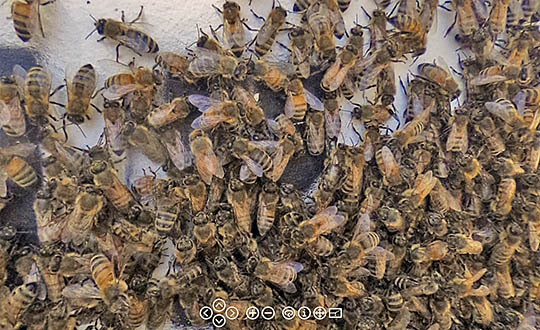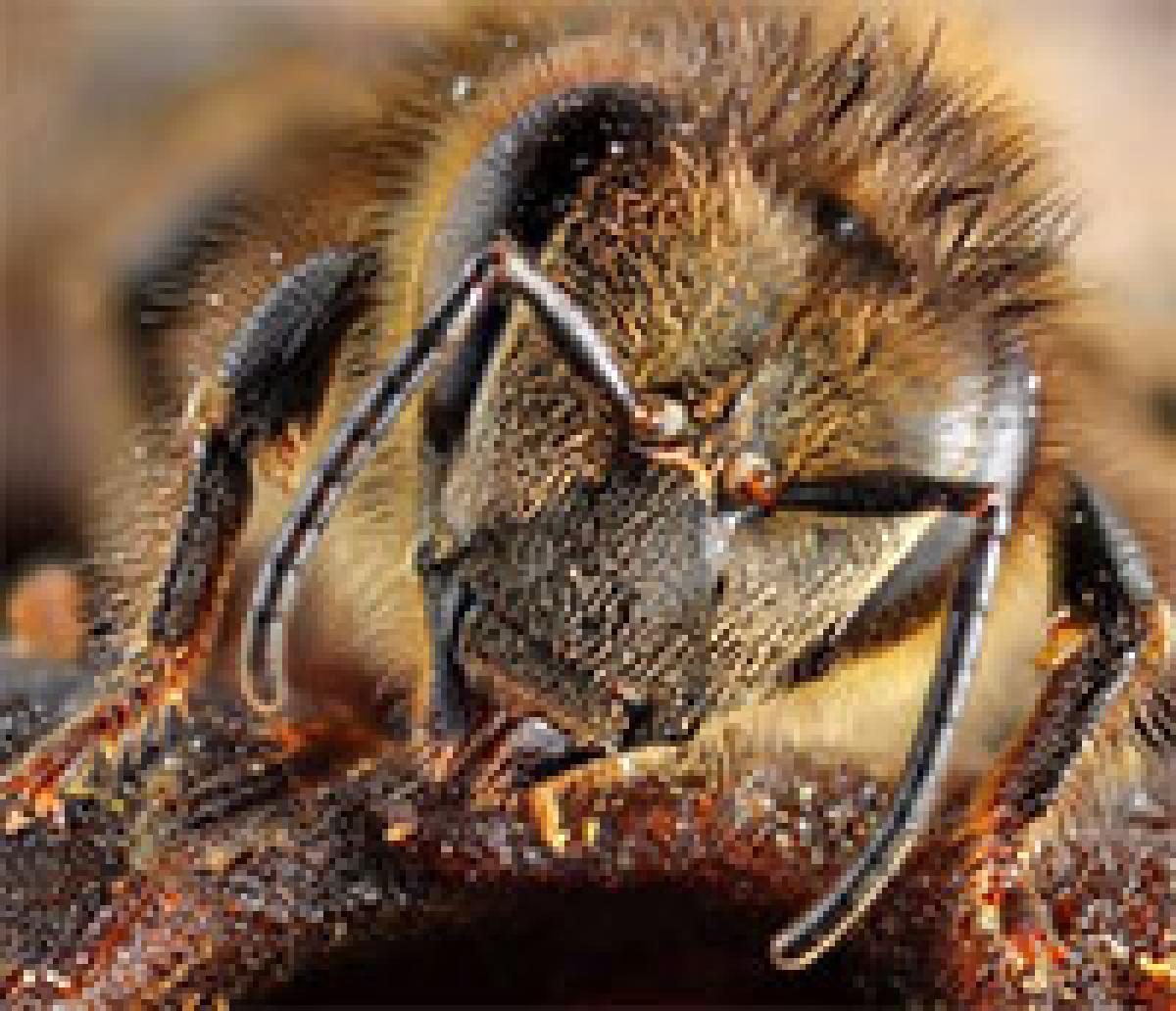Honey Bee Hive Virtual Tour

What if you could shrink down to the size of a honey bee? What would life look like?
Hummmmmm is the sound that you hear all day long. It is only broken up by the close buzz, buzz, buzz, of some of your sisters flying by as they head in and out of your home. Life as a honey bee is one filled with important work. Everyone has a job to do. The queen bee lays eggs all day long. Worker bees build the waxy honeycomb cells, fly out to collect pollen and nectar from flowers to feed the youngsters and to make delicious honey.
With this virtual beehive, you get the chance to visit different hives that are part of ongoing research at the ASU Honey Bee laboratory.
How to explore the virtual beehive

Once you enter the beehive there are some basic icons you want to look for while you explore. The most important one is the Location Icon. You can find them located throughout each virtual tour. They are used to move from location to location. On a computer, smart phone or tablet you can click or touch the icon to move to the new location. When using goggles, you place the pointer on top of the Target Icon to move to the new location.
Bottom Menu Icons

Zoom into the VR image.
Zoom out from the VR image.
Auto rotate the VR image.
Open and close the tour thumbnail images.
Move between stereographic image options.
Enter full screen.
Exit full screen.
Tour Icons

Information Icon - information about a point of interest in the biome.
Location Icon - takes you to a different location in the biome.
Image Icon – opens close-up image of animal or plant.
Time Travel Icon – Move forward in time in the same location.
Time Travel Icon – Move backward in time in the same location.
Video Icon – opens and plays videos.
Leave Virtual Tour – Leave the tour and go to additional information.
Beehive VR 360
This virtual honey beehive was captured at the Arizona State University Bee Laboratory. Biologists focus their research on these important insects.

As you explore this biome, take notes on what you see. Here are a few questions to get you started.
- Why do beekeepers wear white?
- What shape do bees use to make their honeycomb nests?
- How do beekeepers calm bees?
Try out other virtual 360 tours:
Thank you to the ASU Bee Laboratory, Osman Kaftanoglu, and Cahit Ozturk for all their assistance in capturing the VR 360 views and videos of the honey bees.
Read more about: Bee Bonanza
Bibliographic details:
- Article: Be a Bee
- Author(s): Dr. Biology
- Publisher: Arizona State University School of Life Sciences Ask A Biologist
- Site name: ASU - Ask A Biologist
- Date published: 13 Jun, 2017
- Date accessed:
- Link: https://askabiologist.asu.edu/virtual-beehive
APA Style
Dr. Biology. (Tue, 06/13/2017 - 14:35). Be a Bee. ASU - Ask A Biologist. Retrieved from https://askabiologist.asu.edu/virtual-beehive
Chicago Manual of Style
Dr. Biology. "Be a Bee". ASU - Ask A Biologist. 13 Jun 2017. https://askabiologist.asu.edu/virtual-beehive
Dr. Biology. "Be a Bee". ASU - Ask A Biologist. 13 Jun 2017. ASU - Ask A Biologist, Web. https://askabiologist.asu.edu/virtual-beehive
MLA 2017 Style

What would it be like to be a bee? Image by Gilles San Martin via Wikimedia.
Be Part of
Ask A Biologist
By volunteering, or simply sending us feedback on the site. Scientists, teachers, writers, illustrators, and translators are all important to the program. If you are interested in helping with the website we have a Volunteers page to get the process started.

